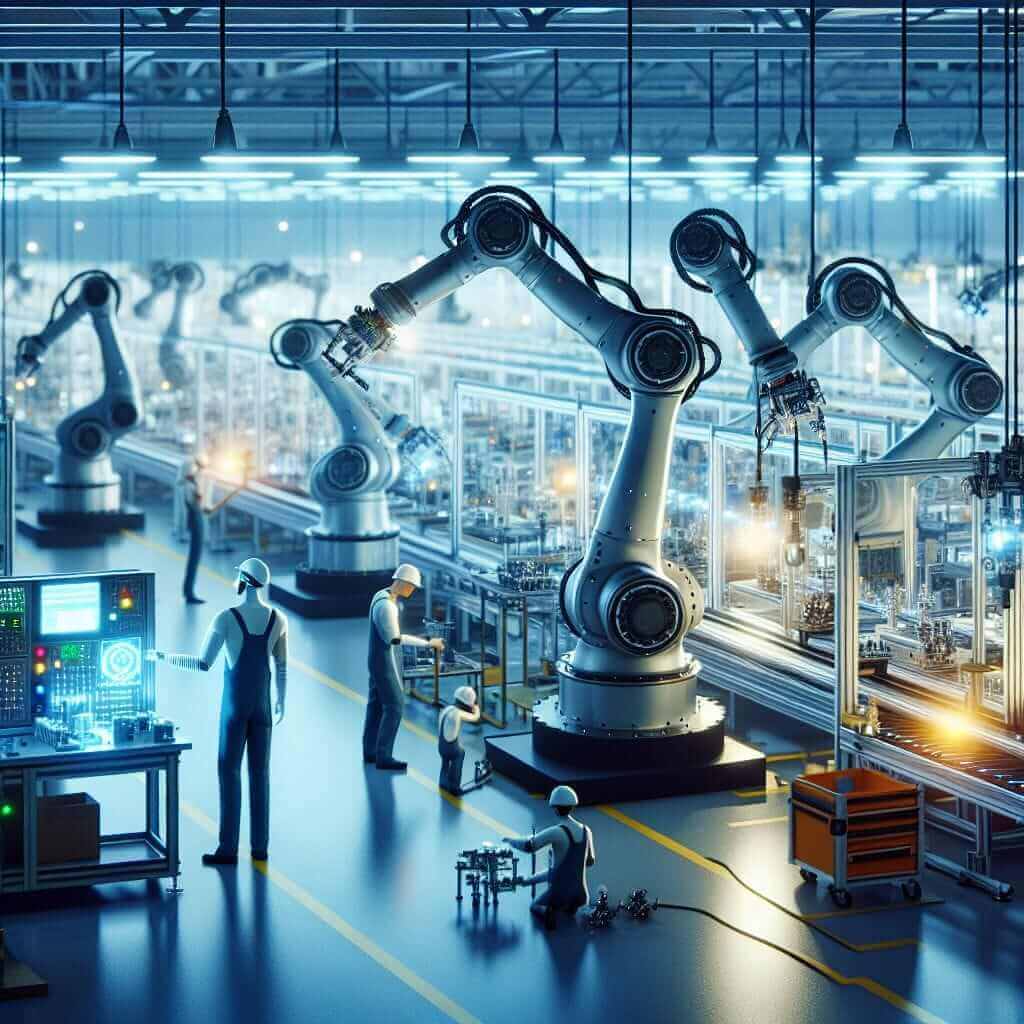Automation in the manufacturing sector has been a hot topic in IELTS Writing Task 2 exams, reflecting the global relevance and impact of this phenomenon on contemporary societies. This article will explore the intricacies of writing an essay on this topic, providing a model essay and a comprehensive analysis to help IELTS students master this subject.
Potential IELTS Writing Task 2 Prompts
The topic “The effects of automation on the manufacturing sector” is frequently seen in various forms in the IELTS exam. Here are a few sample prompts:
- Prompt 1: The increasing use of automation in the manufacturing sector is causing a decline in employment opportunities. Do you agree or disagree?
- Prompt 2: Discuss the advantages and disadvantages of automation in the manufacturing sector.
- Prompt 3: The impact of automation on the manufacturing sector has both positive and negative consequences. To what extent do you agree or disagree?
For this guide, we will focus on Prompt 1.
Analysis of the Chosen Prompt
Prompt: The increasing use of automation in the manufacturing sector is causing a decline in employment opportunities. Do you agree or disagree?
Key Components to Discuss:
- Automation in Manufacturing: Define and explore what automation entails in this context.
- Employment Decline: Discuss if and how automation leads to fewer jobs.
- Balancing the Argument: Consider presenting both sides to show a balanced essay structure.
Model Essay
Introduction
In recent years, automation has revolutionized various industries, notably the manufacturing sector. This transformation has sparked debate over its potential to decrease employment opportunities. While some argue that automation leads to job redundancies, others believe it creates new opportunities for skilled workers. This essay will discuss both perspectives and present a reasoned argument supporting the latter view.
Body Paragraph 1: The Negative Impact on Employment
Firstly, it is undeniable that automation can displace workers. Machines and robots can perform repetitive and monotonous tasks more efficiently and accurately than humans, leading to a reduction in demand for manual labor. For instance, car manufacturing plants have significantly reduced their workforce as assembly lines are now operated by automated systems. Such trends suggest that unskilled and semi-skilled workers are particularly vulnerable to job losses.
Body Paragraph 2: New Opportunities and Skills Demand
Conversely, automation also creates new and diverse job opportunities. The need for designing, programming, and maintaining advanced machinery requires a skilled workforce, which can lead to the creation of high-paying jobs. For example, industries such as IT and robotics are booming due to the increased demand for automation specialists. Additionally, upskilling initiatives are helping displaced workers transition into roles that better match the evolving job market.
Body Paragraph 3: Balancing the Consequences
Furthermore, automation can enhance productivity and economic growth, leading indirectly to job creation. By increasing efficiency and reducing production costs, companies can expand their operations and invest in new ventures, ultimately generating new employment opportunities. Moreover, the improvement in product quality and consistency can boost consumer demand, prompting further industrial expansion.
Conclusion
In conclusion, while the rise of automation in the manufacturing sector might lead to a short-term decline in employment opportunities for certain segments of the workforce, it simultaneously fosters the creation of new roles requiring advanced skills. Governments and industries must collaborate to facilitate this transition by investing in education and training programs. This approach ensures that the benefits of automation are maximized, and its adverse effects are minimized.
Word Count: 300

Key Considerations When Writing About This Topic
Vocabulary and Grammar Tips
- Technical Terminology: Use specific terms related to automation (e.g., “robots,” “assembly lines,” “programming”).
- Complex Sentences: Employ a variety of sentence structures to demonstrate grammatical proficiency (e.g., relative clauses, conditional sentences).
- Cohesive Devices: Utilize linking words and phrases to ensure logical flow (e.g., “consequently,” “nevertheless,” “therefore”).
Lexical Resource Recommendations
- Displace (v) /dɪsˈpleɪs/ – to remove from a position of responsibility.
- Monotonous (adj) /məˈnɒtənəs/ – dull, tedious, and repetitious.
- Upskilling (n) /ˈʌpskɪlɪŋ/ – the process of teaching workers new skills.
- Efficiency (n) /ɪˈfɪʃənsi/ – performing in the best possible manner with the least waste of time and effort.
- Proficiency (n) /prəˈfɪʃnsi/ – a high degree of competency or skill.
Conclusion
Automation in the manufacturing sector is a nuanced topic with both positive and negative impacts on employment. Understanding and articulating these effects are crucial for essay writing in the IELTS exam. By considering various viewpoints and using advanced vocabulary and grammar, students can craft compelling essays. More practice prompts on similar topics include:
- The Role of Automation in Healthcare
- The Future of Employment in the Age of AI
- How Digital Innovation is Transforming Traditional Industries
By mastering these essays, students can significantly improve their IELTS Writing Task 2 skills.